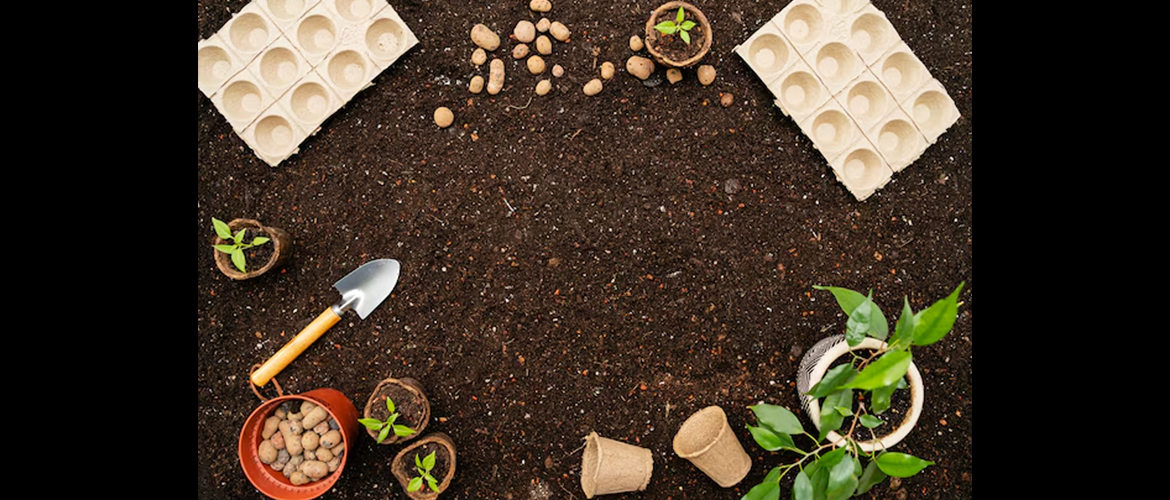Are you dreaming of transforming your backyard into a lush, green haven or growing your fresh vegetables and herbs? Gardening is a rewarding hobby that can bring you closer to nature, improve your health, and even save you money. Whether you’re starting from scratch, gardening with kids, or looking to refine your green thumb, this blog on gardening for beginners will help you embark on a successful gardening journey without making any gardening mistakes. Let’s start!
Why Start Gardening?
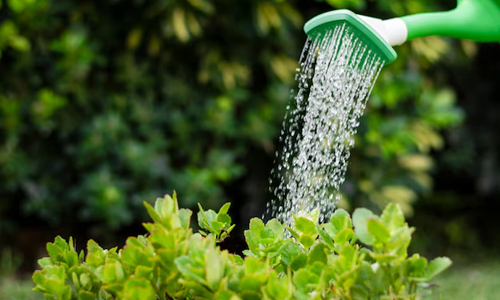
Do you know why so many people are interested in gardening? Gardening offers numerous benefits, both physically and mentally. It is a great form of exercise, helping you stay active while reducing stress. The environmental impact is also significant; gardening helps combat climate change by absorbing carbon dioxide and providing you with fresh air to breathe. Plus, growing your produce can lead to cost savings and greater self-sufficiency. Imagine the satisfaction of picking a ripe tomato from your garden or the joy of seeing your yard bloom with colorful flowers! An amazing feeling, isn’t it? Here are some important Gardening Tips for Beginners.
1. Understand Your Gardening Zone
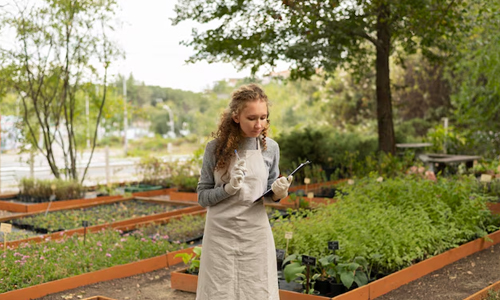
Before you plant anything, it’s crucial to understand your USDA Hardiness Zone. This will help you determine which plants are most likely to thrive in your area. Do you know which zone you’re in? You can easily find this information online by entering your zip code. Knowing your zone helps you choose plants that can withstand your local climate, ensuring a more successful gardening experience.
2. Basic Gardening Tools and Supplies
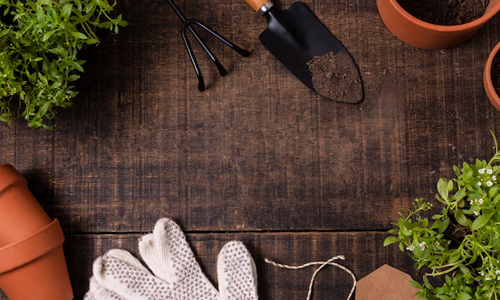
Starting with the right tools can make gardening for beginners much more enjoyable. Essential tools include gloves to protect your hands, a trowel for digging, pruners for trimming plants, and a watering can or hose. While it’s tempting to buy everything at once, focus on quality over quantity. Have you already gathered some basic tools? Maintaining them properly, such as cleaning and storing them correctly, will ensure they last longer and perform better.
3. Choose the Right Plants
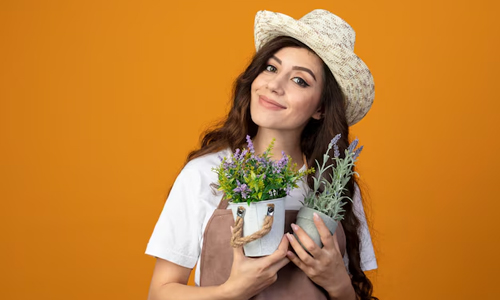
Choosing the right plants is an important step in gardening for beginners. Consider your climate, soil type, and the amount of sunlight your garden receives. Are you interested in growing hedges, flowers, vegetables, or herbs? For beginners, easy-to-grow plants like marigolds, sunflowers, lettuce, basil, and vegetables such as tomatoes, peppers, radishes, and snap peas are great choices. Because these plants require minimal care and can quickly boost your confidence as a new gardener.
4. Prepare Your Garden Space
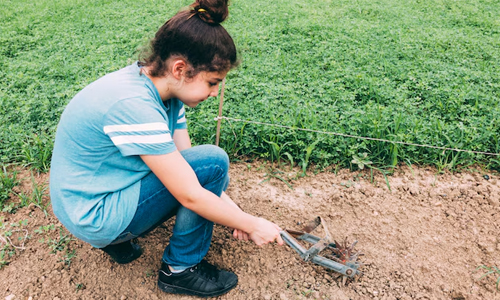
Where will you set up your garden? Selecting a suitable location is the key. Look for a spot that gets plenty of sunlight and has access to water. Poor soil preparation can affect plant growth and nutrient uptake. First, you have to decide whether you want an in-ground garden, raised beds, clay pots, plastic containers, or wooden planters for gardening.
- In-ground Garden
This method provides plenty of space for the plants to grow and allows roots to expand freely. However, they require good soil preparation and are more susceptible to weeds and pests.
- Raised Beds
They are ideal for areas with poor soil and can reduce the need for bending. Raised beds can also help with pest control by creating a defined barrier.
- Clay Pots
These pots are porous allowing good air circulation and preventing root rot. They can be a beautiful addition to your garden. However, they can dry out quickly and are heavier to move around.
- Plastic Containers
These containers are light in weight, retain moisture well, and are available in various sizes and shapes. They are durable and easy to clean, making them a practical choice for beginners.
- Wooden Planters
They offer a natural look and good insulation for plant roots. They are sturdy and can be customized to fit any garden space. However, they may require more maintenance, such as sealing or treating the wood to prevent rot.
Depending on your specific needs, space, and preferences, choose the right type of garden setup from the above. Let us know which option works best for you.
5. Now It’s Planting Time!
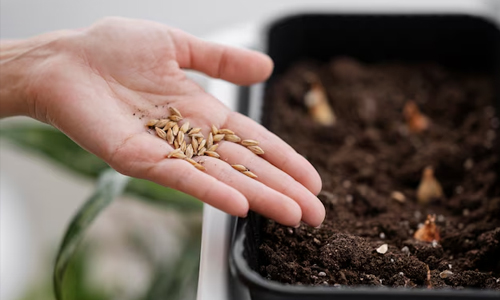
Now comes the exciting part: planting! Do you know the best time to plant in your area? Early spring and late summer are typically ideal for most regions in the US. Decide whether you want to start from seeds or buy seedlings. Starting from seeds can be more economical and rewarding, but buying seedlings can give you a head start. Follow the planting instructions for each type of plant, ensuring they are spaced correctly and planted at the right depth.
6. Watering and Fertilizing
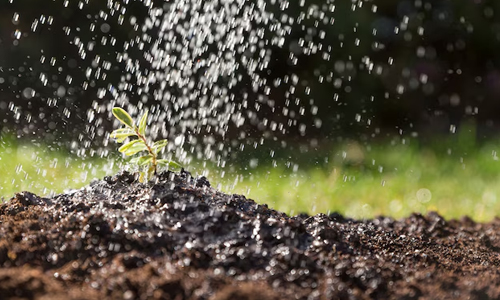
These are the significant recommendations for amateur gardeners. How often should one water their garden? Well, it differs for different plants and weather; however, it is suggested to water your plants thoroughly once or twice a week. This is because water logging hinders aeration and can cause root rot and other associated fungal diseases. You can use any of these watering techniques such as drip irrigation, sprinkles, or even hand water for plants. It is always wise to use organic materials such as compost or well-decomposed manure since they also help to condition the soil and release nutrients to the plants slowly without the burnt effects that accompany chemical fertilizers.
7. Garden Maintenance
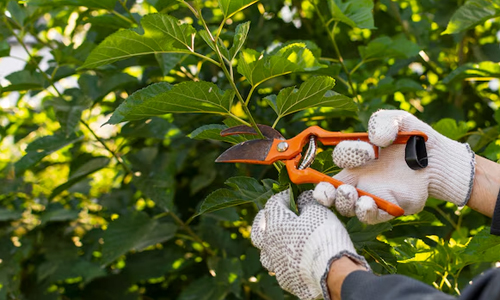
Keeping your garden in top shape requires regular maintenance. What tasks do you think are essential? Weeding, mulching, and pruning are critical. Mulching helps retain moisture and suppress weeds, while pruning encourages healthy growth. Pest control is another important aspect. Are you familiar with organic pest control methods? These include using beneficial insects or natural sprays to keep pests at bay without harming your plants or the environment.
8. Harvesting & Storing Your Produce
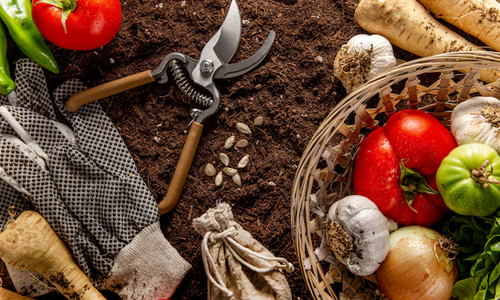
One of the enjoyable experiences that come with gardening for newbies is picking the fruits of your effort from your garden. Are you aware of the signs that can help you identify when your vegetables and herbs are in the right harvest time? Therefore, it is good to pick the fruit at the right time for its ripeness taste, and quality.
For example, tomatoes should be harvested when they are still green but fully developed while plants with leaves like lettuce should be harvested daily where you only take the outside leaves and allow the inside area to continue growing. There are also some simple tricks you can use to tell whether the fruit is ripe: a quick taste test is good enough. When picking vegetables, fruits, flowers, or herbs, always use a pair of sharp scissors or pruners to avoid damaging the plant.
If you harvested the produce, then how are you going to store the produce so that they do not spoil? The rule of thumb is that most vegetables should be refrigerated while herbs may be left in a glass of water on the counter or dried and stored for longer use
Troubleshooting Common Issues While Gardening
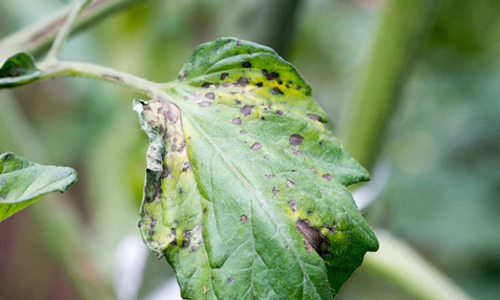
Even experienced gardeners face challenges. So, don’t worry if you encounter any of the problems indicated below. Common issues are yellowing leaves, wilting, or stunted growth which are the symptoms of pests, diseases, and nutrient deficiencies. Identifying these issues early and taking corrective action will help your garden flourish. Remember, every challenge is an opportunity to learn and improve your gardening skills.
What unique solutions have you discovered to keep your garden healthy and thriving? Share your experience. Learning from others and experimenting with different techniques can turn challenges into opportunities for growth and improvement.
Bonus Information
Some Interesting Facts about Indoor and Outdoor Plants That Would Kick Start Your Journey into Gardening
Indoor Plants
- Some of these plants include the peace lily, spider plant, and snake plant and are well known to clear poisonous compounds like formaldehyde and benzene.
- Low-light tolerant plants such as succulents, ZZ plants, or pothos, are ideal as they need minimal attention to thrive.
- Current research shows that these plants can lower stress and anxiety levels, boost creativity, and enhance focus.
- When the indoor plants are transpiring, they will evaporate moisture that will assist in controlling the humidity of the house.
- They bring some natural feeling into your homes and can suit perfectly along with your chosen interior design to make your living areas seem cozier and calming.
Outdoor Plants
- Some of the plants that can be grown outdoors include those that are used as attractants for bees, butterflies and the like that carry out the pollination process. Lavender, coneflowers, and sunflowers are flowers that can be planted to encourage the presence of these creatures and enhance the conditions for their habitation.
- It is advantageous to have home-grown food crops especially those like vegetables and herbs which are more healthy and tasty than those bought from the stores.
- Annuals such as petunias or marigolds would require replanting every spring while perennials like daylilies, hostas, and peonies bloom continuously and do not have to be replanted every year.
- Marigolds can be companions planted with tomatoes and this prevents the attack of pests. The act of planting these crops together is referred to as companion planting.
- But using native plants in your garden is beneficial because plants in such gardens are familiar with your local weather and the type of soil you have, and they need less water, fertilizer, and pest control chemicals than other plants so they are friendly to the environment.
Hope these interesting facts can provide a solid foundation and spark your gardening enthusiasm. Whether you’re nurturing indoor plants or cultivating an outdoor garden, the joys and benefits of gardening are endless.
Your Gardening Journey Starts Here!
Gardening for beginners is a fulfilling journey that can enhance your life in many ways. From the physical benefits of outdoor activity to the joy of watching your garden grow, the rewards are plentiful. Remember, every gardener started as a beginner. With patience, persistence, and the tips from this guide, you’ll be well on your way to creating a thriving garden. Consider involving your young children in gardening activities—it’s not only educational but also a fantastic way to bond as a family and instill a love for nature early on. Happy gardening!
Valentina
Related posts
Women Tips
Privacy Overview
| Cookie | Duration | Description |
|---|---|---|
| cookielawinfo-checkbox-analytics | 11 months | This cookie is set by GDPR Cookie Consent plugin. The cookie is used to store the user consent for the cookies in the category "Analytics". |
| cookielawinfo-checkbox-functional | 11 months | The cookie is set by GDPR cookie consent to record the user consent for the cookies in the category "Functional". |
| cookielawinfo-checkbox-necessary | 11 months | This cookie is set by GDPR Cookie Consent plugin. The cookies is used to store the user consent for the cookies in the category "Necessary". |
| cookielawinfo-checkbox-others | 11 months | This cookie is set by GDPR Cookie Consent plugin. The cookie is used to store the user consent for the cookies in the category "Other. |
| cookielawinfo-checkbox-performance | 11 months | This cookie is set by GDPR Cookie Consent plugin. The cookie is used to store the user consent for the cookies in the category "Performance". |
| viewed_cookie_policy | 11 months | The cookie is set by the GDPR Cookie Consent plugin and is used to store whether or not user has consented to the use of cookies. It does not store any personal data. |

